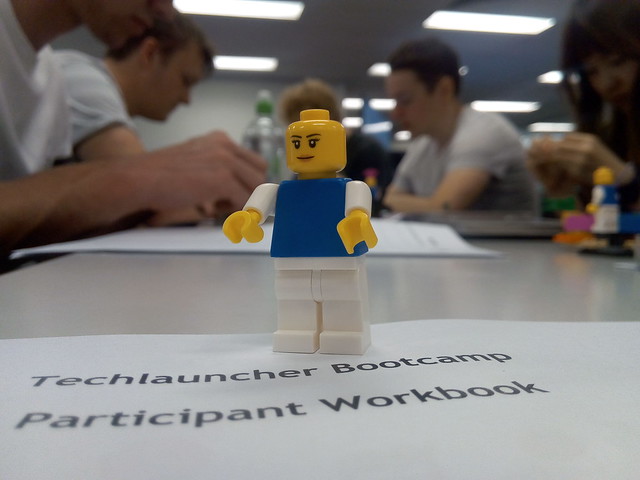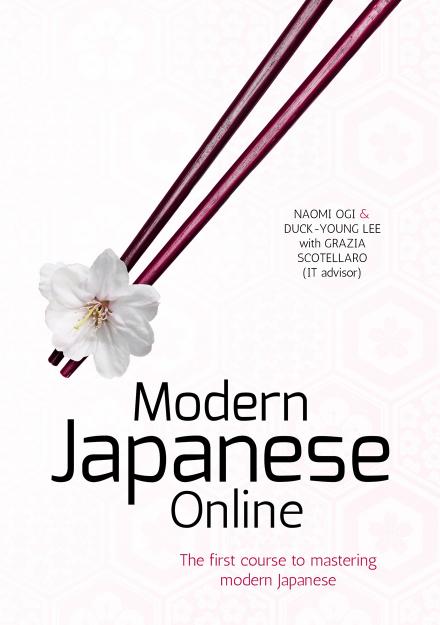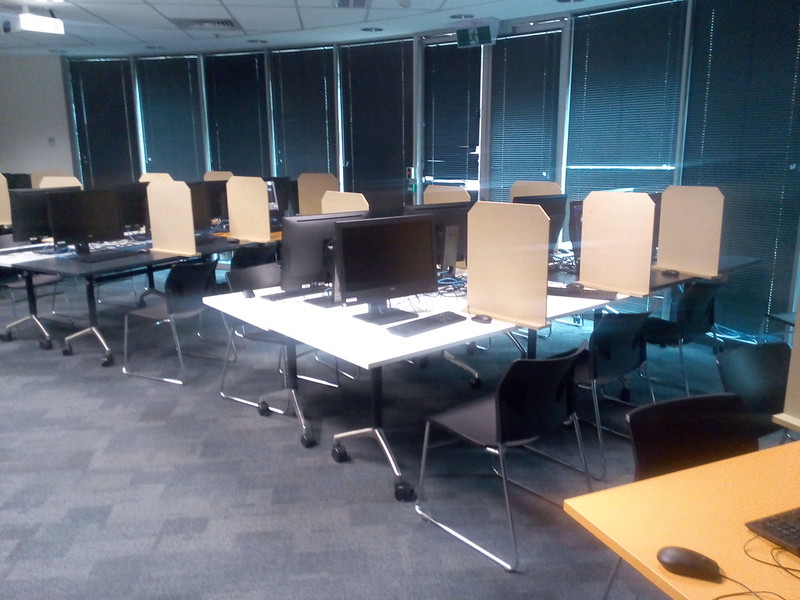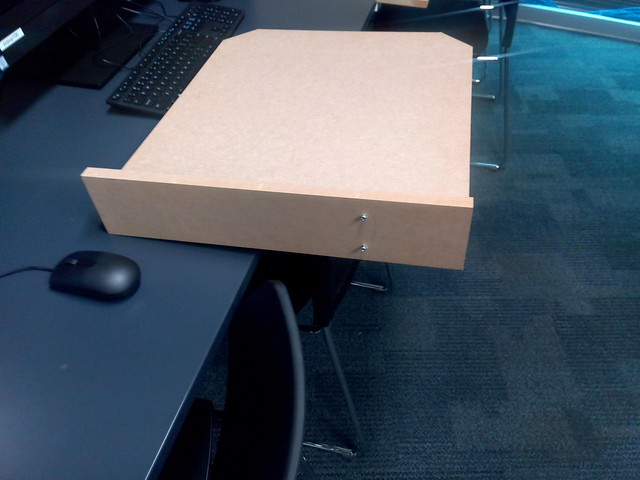, CEO of the Australian Information Industry Association (AIIA), and just after the ANU VC. The committee had my short
"Mr Worthington
: I'm an honorary
lecturer in computer science at the Australian National University where
I teach computer professional skills, and I'm a member of the
professional education governance committee of the Australian Computer
Society, where I help set the education standards for computer
professionals, but I'm making this submission in my own individual
capacity as an educator.
You've heard from others about how
technology is going to eliminate many jobs, and I would agree with the
estimates of somewhere between 10 to 40 per cent of jobs. Some of my
colleagues in the IT profession in Australia are effectively helping
that happen. Workers will need better soft and technical skills. They
will also need regular retraining because they will have multiple
careers. I guess I'm an example of that. I started as a computer
programmer with the government, working for the defence department. I've
been retrained with a second skill as an educator, being trained in
Australia and in North America.
Australia already has an education
system which could provide work-ready learning across schools,
vocational and higher education, and I suggest that we just need to
tweak it a bit to make it more flexible. We need to strengthen the
vocational education and training—VET—sector, so that it will blend
between secondary education and universities. We need to fix up the
conditional loans schemes so that they can be applied to the VET sector
more freely.
We need to make university more
flexible where the assumption isn't that someone does a three-year
degree full-time and the exceptions are part-time people. The assumption
should be that people will do smaller subdegree qualifications. The
Vice-Chancellor of ANU mentioned microcredentials. They'll be doing
those part-time and mostly online, not on campus, in response to the
needs they have in the workplace. Actually most university courses are
already blended. They're already mostly online and partly on campus as
we speak, but that's not reflected in government policy or the rhetoric
of universities mostly.
We have a particular problem with
international students. Regulations require them to be enrolled
full-time all the time and that imposes a burden on people doing the
education because, if a student fails or drops one subject, they have a
problem. So I think we need to make that more flexible and allow them to
do part of that online and allow them to do less than a full-time load.
We need to address soft skills more
in our university system. I help do that at the ANU with the
TechLauncher program where we have teams of students working on real
problems for real clients in Canberra. These are skills that can be
taught, but the problem is that the people teaching them—university
academics—generally don't have the skills to do the teaching. We need to
ask our university lecturers to be formally qualified in teaching I
believe, which is a problem because university professors like to make
other people do courses but they don't like to do them themselves. So I
think that will need some encouragement via funding and perhaps some
regulation in the system. That's about all I had to say. I welcome
questions.
CHAIR: Thanks, Mr Worthington. At this point I might exit and hand over to Senator Patrick. I hope to be back before you finish up.
ACTING CHAIR
(
Senator Patrick
): Thank you, Chair.
Perhaps I'll start in reverse order. Mr Worthington, you describe your
own situation as having changed throughout your career. I myself have
managed a number of engineers over time. There is a progression we
currently have in engineering where you might be a computer scientist
then perhaps either go off in a different direction to management or
broaden yourself from computer science to hardware to then algorithm
development and some other disciplines, so you become multidisciplined.
So is there really a change that is taking place or are you simply
leveraging off your past knowledge and steering your career perhaps to a
higher level?
Mr Worthington
: I think there is a
change. You need to learn new skills in a new area. The problem comes
when you need to learn them relatively quickly. One of the examples
given in the previous evidence was about cybersecurity. I help teach
some people who are going to go into that area and that involves for
technical people issues of human behaviour, international relations, the
law and all sorts of things that they weren't previously familiar with.
So I think this not just a matter of degree but a matter of learning
new things.
It can also be that they're not
necessarily at a higher level of abstraction—for example, to teach in
the Australian vocational education sector I had to go to TAFE and learn
TAFE teaching, even though I was already giving lectures at
universities. I had to learn a different way to approach it. I could've
said: 'That's TAFE teaching. That's a low level. Why do I have to get
that?' But I had to learn a different way of teaching, so I went to the
appropriate place to learn those types of skills. I think we'll see
people having a grab bag of little qualifications and different skills
they get from different forms of institutions.
ACTING CHAIR: I
guess I was suggesting that as you move along in your career and you do
make changes there are, really, additional skills that you're learning
which complement the next thing that you're doing. You don't end up
giving away some of those past skills that you have learnt.
Mr Worthington
: I wouldn't agree
with that. For example, I tutor teams of students writing computer
software and I have to say to them, 'The commuter programming languages I
learnt stopped being used before you were born, so I can't help you
with the technical aspects of your code. I can help you with how to talk
to the client, how to manage the team, how to plan and strategise, but
for the technical elements of this I am no longer confident in this
area.'
ACTING CHAIR: I think there is a place for people who can install a program in assembly language. It's still okay!
Mr Worthington
: Yes, but they've stopped using some of the processes I used as well.
ACTING CHAIR: Sure.
Mr Worthington
: I don't think it's
just a matter of adding to your skills. There'll be many skills that are
no longer relevant. AI was mentioned. There'll be things that used to
be seen as a very important technical skill. Now the computer does it,
and what was your main bread and butter nobody really wants.
ACTING CHAIR: I
noticed you were in my line of sight when I was asking about the 10 per
cent versus 40 per cent. You seemed to be nodding on the 10 per cent.
Mr Worthington
: It's somewhere in
between 10 and 40 per cent for jobs disappearing. Nobody really knows. I
think there's a view out there that all this technological development
happens in a smooth, planned way. But, having seen it from the inside,
we're making it up as we go along and we don't really know, when we
produce some new technology, whether it's going to take off or not,
whether people will really accept automated self-driving processes or
not. So, to a large extent, we don't know.
ACTING CHAIR:
That's the cruise-control example I was using: a safe way to get,
eventually, to automation but it may not happen quickly, or maybe
there's some point where it suddenly takes off. I guess these things are
hard to predict.
Mr Worthington
: Yes. I have people
come up to me every week and say, 'Hey, look, we've invented a new'
something. And I go, 'Yes, and what can you use it for, and will anybody
want it?' They're the really hard questions.
ACTING CHAIR: Yes.
I ran an R&D cell. I had 30 ideas pop before me per week and every
once in a while one of them had a market, so I know where you're coming
from. You talk about the development of new technology as being
something that Australians want to have happen. Noting that, from my
experience, you need to do the R&D stage, then you need to move to
prototyping, then to manufacturing, and get the feedback loop into the
development cycle, are we in some sense handicapped because of our
shrinking manufacturing sector? ..."
From: Select Committee on the Future of Work and Workers 04/06/2018, Senate Hansard, Australian Parliament









